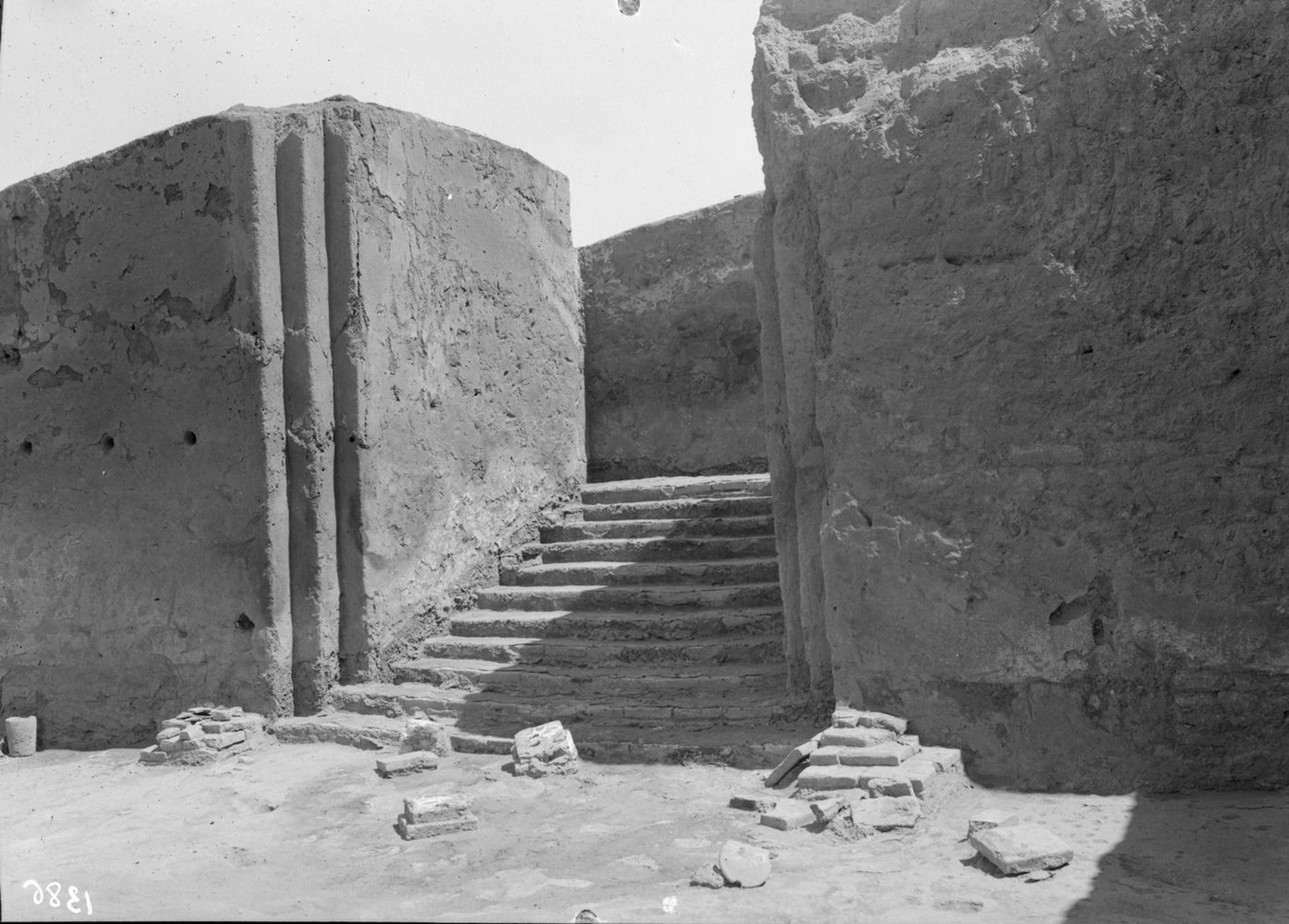
- Home
- The Great royal palace of Mari
- The archaeology of the palace
- The palace’s painted decorations
The scarcity of wall painting surviving from the ancient Near East is due to the fragility of the ground (mud plaster, possibly whitewashed, at best juss, a sort of calcinated gypsum plaster) and the pigment application processes which, with a few exceptions in the Levant, did not employ the water-resistant fresco technique. The quantity and quality of material remains from the palace of Mari are otherwise exceptional.
Underscoring the architecture
Selected areas have non-figurative decorations of false beams, such as Court 106, the “court of the palms”, or faux marbling, including on the podium of Room 64 with the flowing vase goddess, and the open area of Room 31, on plinths, and a simple horizontal band some two metres from the ground (Court 106, Areas I-J).
Figurative compositions
Except for the Investiture Painting, the only painting of this size (2.50 × 1.75 metres) found in situ, the figurative compositions have survived only as fragments scattered among the rubble. Their position, recorded at the time of discovery, nevertheless makes it possible to reconstruct sets of paintings which, although incomplete, have understandable themes. Recurrent in Syro-Mesopotamian iconography, they focus on the royal figure, most often in relation to the gods.
As in most other representations, the essentially anthropomorphic figures are juxtaposed in superposed registers separated by the ground line or by bands of geometric or symbolic motifs.
A decoration dating back to the early 2nd millennium BCE
Not all sets of paintings in the palace of Mari are contemporary: contrary to popular belief, it is not Zimri-Lim, the last king of Mari, who is depicted on the Investiture Painting, but one of his predecessors. The oldest remains (Room 132) probably date from the construction of the palace in circa 2000 BCE. Paradoxically, it was the usurper Yasmah Addu (1793-1775 BCE) who was responsible for the major works in Areas F and M.








